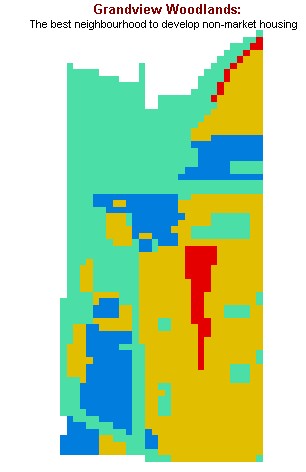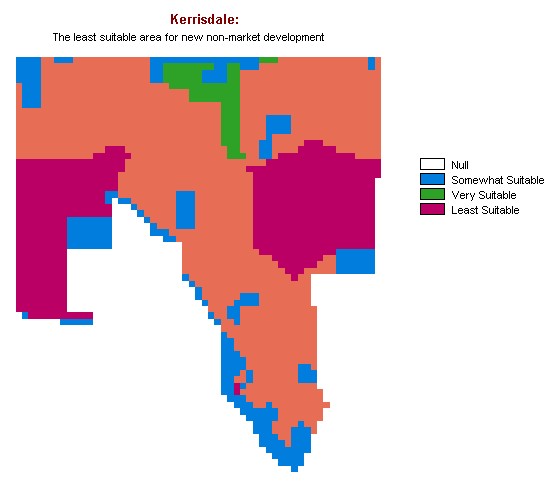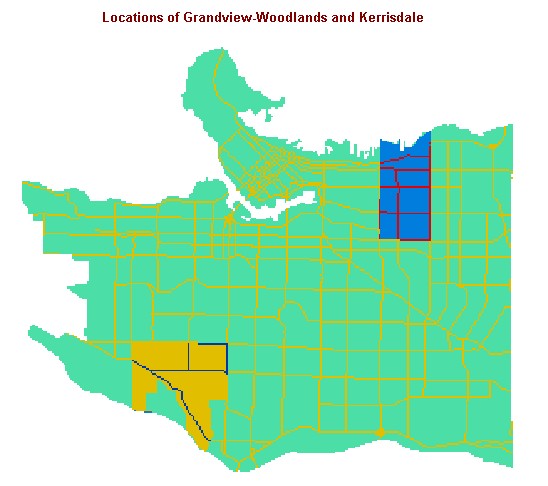By overlaying (logical Boolean OR) the dotareas coverage with the suitability coverage, I was able to determine the best and worst neighbourhoods to develop in. According to my analysis, Grandview Woodlands is the best nieghbourhood to develop new non-market housing, while Kerrisdale is the worst. Below are the corresponding images.



To contextualize both of the above images, the following map is that of Vancouver
